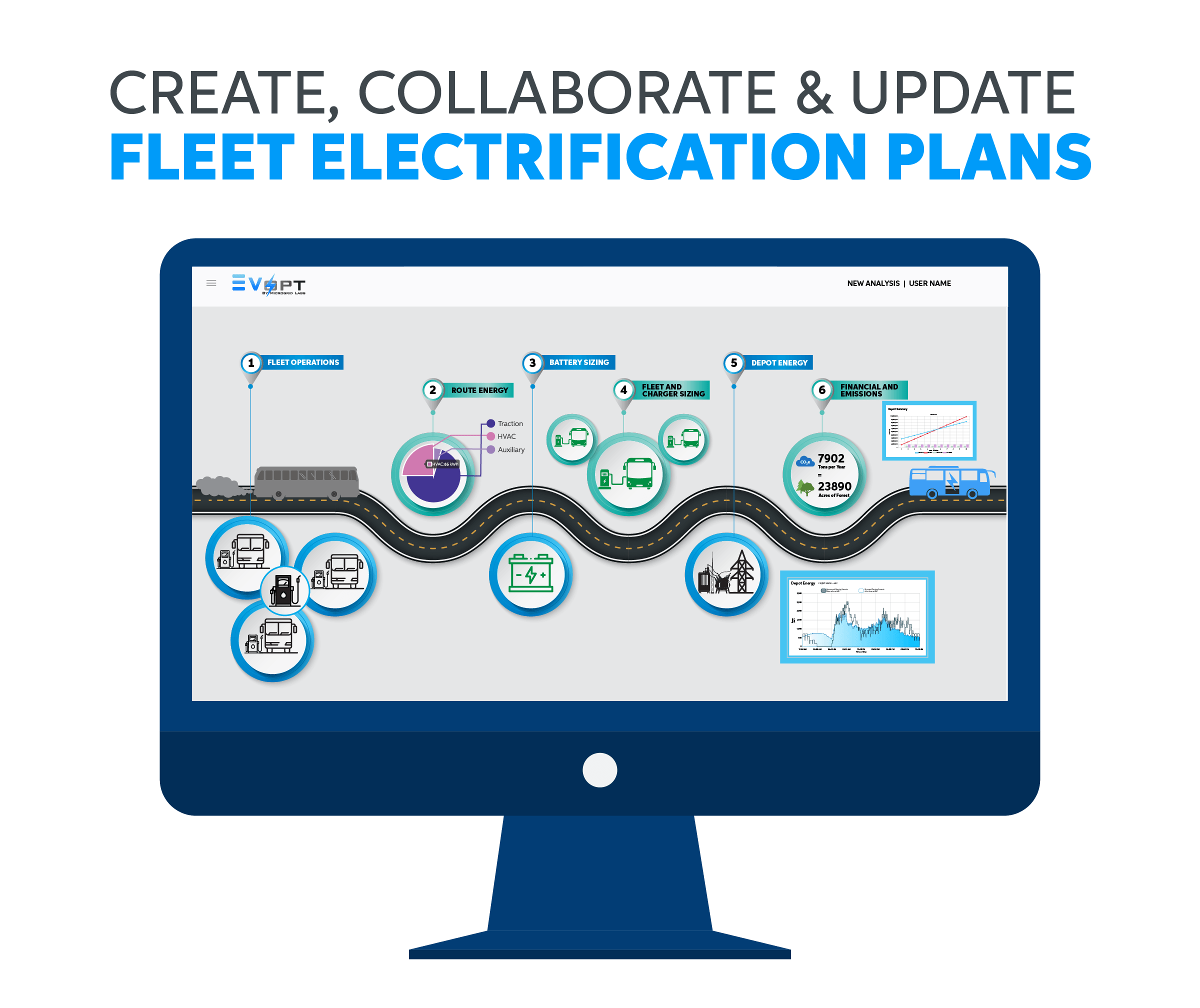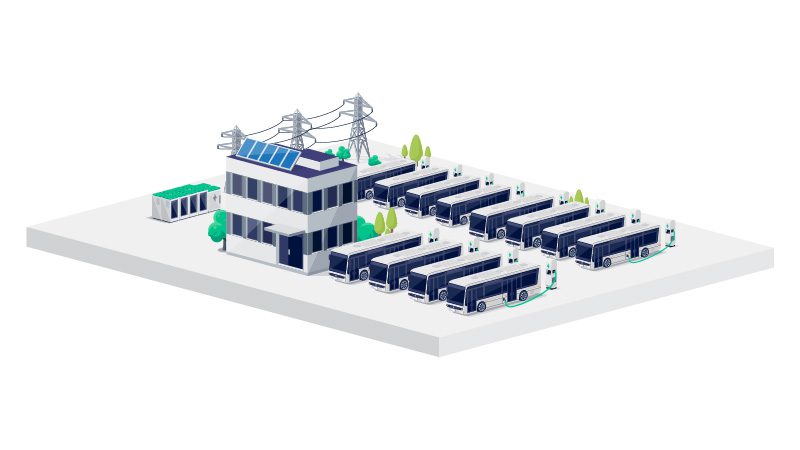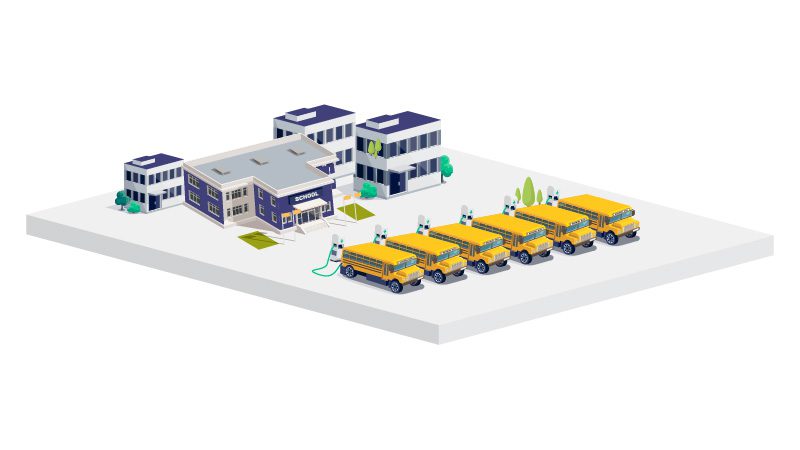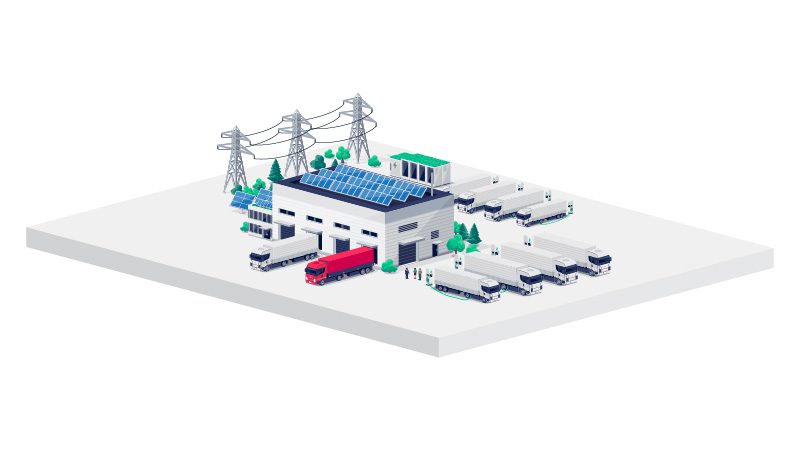EVopt Planner
EVopt-Planner models driving and charging operations to determine the optimum size of the electric fleet, vehicle batteries, and charging/energy infrastructure, aiming to minimize capital and operational costs. Its built-in simulation and “what-if” analysis functions aid in evaluating the impact of changes to operating conditions, mitigating risks arising from uncertainties.
Features and Functions
EVopt models and analyzes the fleet electrification system in a step-by-step manner.
Features
- Route energy calculations
- Battery sizing
- Operating schedule
- Charger power ratings
- Electric load profiles
- Capital and operational costs
- Total cost of ownership
- Emissions calculations
Functionality
- Right-size key system components (batteries, chargers, fleet size, energy infrastructure)
- Optimize system costs
- Address grid constraints
- Size onsite energy resources
- Generate charging schedule
- Verify each deployment stage

Technology Underpinnings
EVopt-Planner integrates technology developed in national laboratories, incorporates advanced algorithms developed through fleet consulting projects across the globe, and has been thoroughly validated against real-world performance data. Now available in a user-friendly cloud-based application.
Use Cases
- Minimize data input using GTFS data
- Develop charging strategy (depot charging, layover charging, on-route charging)
- Optimize system design (battery size, charger size, fleet size)
- Manage lane geometry constraints
- Manage grid constraints
- Optimize charging schedule to minimize electricity cost
- Integrate DER/microgrids

- Minimize Data Input using EPA form.
- Develop Charging Strategy (Overnight Charging, Overnight + Midday Charging, Home Charging)
- Optimize System Design (Battery Size, Charger Size, Fleet Size)
- Manage Grid Constraints
- Optimize Charging Schedule to minimize electricity cost.
- Quantify V2G Benefits.
- Integrate DER/Microgrids.

- Minimize data input using telematics data
- Develop charging strategy (depot charging, layover charging, public charging)
- Optimize system design (battery size, charger size, fleet size)
- Manage grid constraints
- Optimize charging schedule to minimize electricity cost
- Integrate DER/microgrids




